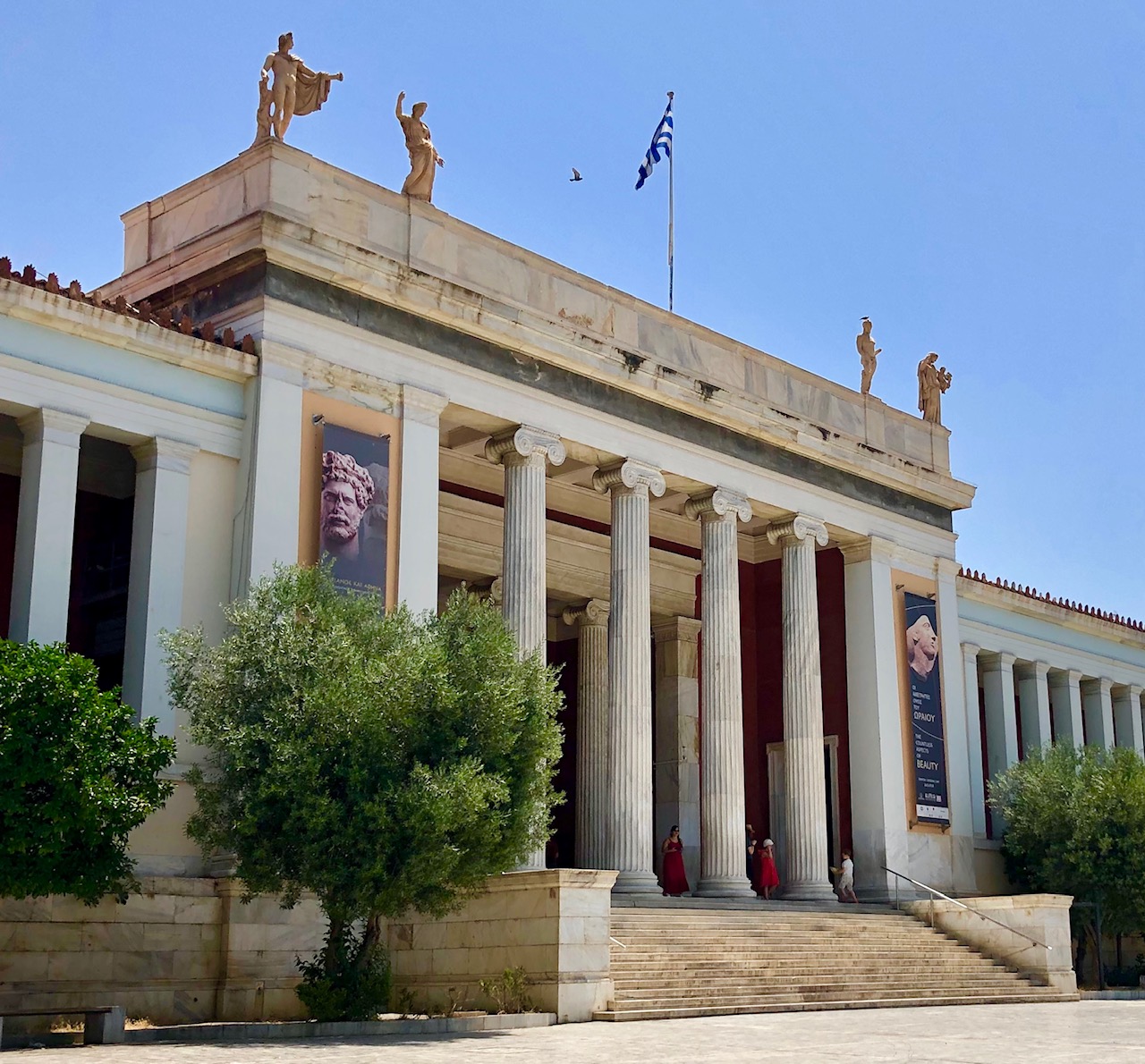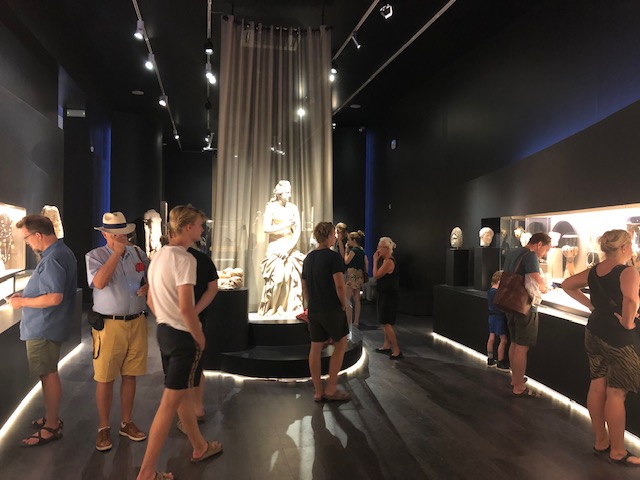From golden goblets to frying pans to perfume
On our next to last day in Greece last summer, we capped off our Greek museum tour with a visit to the National Archaeological Museum in Athens. It was the last museum we would see, having already visited other museums in Athens (The Acropolis Museum), Mycenae, Delphi, Olympia, and Heraklion. You would think that we would have been “museumed out,” but actually each museum is so unique to its location that each one feels quite different from the others.

So what sets the National Archaeological Museum in Athens apart from the others? In a word, I would say “breadth.” In fact, you will find the widest gamut of Greek artifacts and art. This museum has pieces from all those other areas we had visited across the country, in addition to hundreds (possibly thousands) more.
By the way, here’s a list with links to posts I’ve written about the other museums we visited in Greece:
- The Acropolis Museum (I haven’t written a post yet, but here’s the link to the museum website.)
- Archaeological Museum in Mycenae
- Archaeological Museum of Delphi
- Archaeological Museum of Olympia
- Heraklion Archaeological Museum, which serves as the central museum on Crete for both Knossos Palace, Phaistos, and other sites
For example, when we visited the Museum of Mycenae, the golden Mask of Agamemnon that was discovered in a grave circle there, was not held in that museum.

The mask on exhibit in Mycenae is a replica, a guard told me. The original could be found in the National Museum in Athens, he added. Upon hearing this, we made a mental note to seek out the mask when we would eventually tour the National.
Watch this video from Khan Academy for more about this mask.
When one visits a museum in Greece, you truly feel that you are in the hub of antiquity. Each museum is an art historian’s dream; art history students will also be amazed at seeing in person so many famous works commonly found in textbooks.
This description of the National Museum can be found on the museum’s website:
“The National Archaeological Museum is the largest museum in Greece and one of the most important in the world. Originally destined to receive all the 19th century excavations, mainly from Attica and other parts of the country, it gradually took the form of a central National Archaeological Museum and was enriched with finds from all parts of the Greek world. The rich collections, enumerating more than 11,000 exhibits, offer the visitor a panorama of ancient Greek culture from the prehistory to the late antiquity.”


Here’s a listing of the various collections within the museum:
- prehistoric antiquities
- sculpture
- metalwork
- vases and minor arts
- Egyptian antiquities
- Cypriot antiquities (those from the island of Cyprus).
















Visiting the National Museum in Athens was our final stop of our five-week Greek odyssey. We left Athens at 6 a.m. the next morning, for a short layover in Amsterdam, and then Atlanta, and then finally to our home airport in Springfield, Mo.
Featured Photo Credit: Marilyn Yung | Bronze sculpture (of Zeus or Poseidon) in the Severe style, 460 BC.

6 replies on “The Zeus of Greek Museums”
Amazing!
LikeLiked by 1 person
Thank you for reading and commenting!
LikeLiked by 1 person
You’re welcome 😇
LikeLike
[…] enough to take the time to see this incredible site. Follow my blog for more travel stories from Greece, including Skopelos and Crete, as well as Italy, including Venice and other […]
LikeLike
[…] members and grave goods. Those goods can be found at the National Archaeological Museum in Athens. Here’s my post on that museum. This circular enclosure was an updated feature added to enhance the royal burial ground. When was […]
LikeLike
[…] its golden handle. Today, this sword is kept in the National Archaeological Museum in Athens. Read this post about the […]
LikeLike